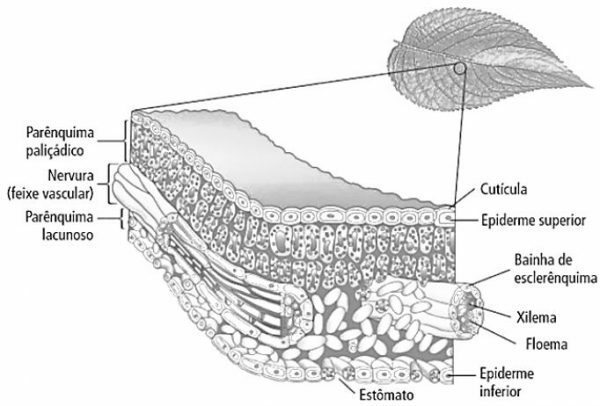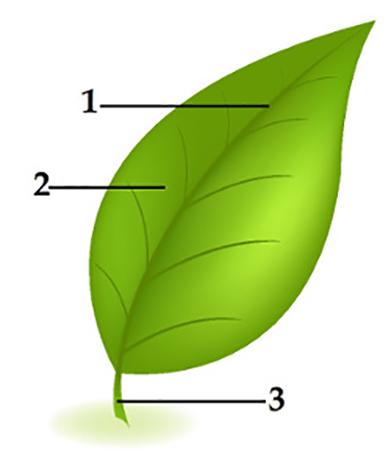The endocrine glands produce hormones and release them directly into the bloodstream.
Hormones are the products of secretion from the endocrine glands. They control various activities in the human body, hence the importance of these glands.
The endocrine glands are regulated by the Nervous System, especially the hypothalamus.

Location of some glands in the human body
The glands are part of the Endocrine System and can be classified into three types:
- Exocrine: They release their products out of the body through ducts. They are external secretion glands. Examples: mammary, sweat and sebaceous glands.
- Endocrine: Release their products into the bloodstream. They are internal secretion glands.
- Mixed or Amphicrine: Act at the same time as exocrine and endocrine glands. Example: pancreas.
Main Glands and Hormones
The main endocrine glands in the human body are:
Hypophysis
THE hypophysis it is considered the master gland of the body. It is a small gland, approximately the size of a pea, located at the base of the brain.
The pituitary is divided into two parts: the anterior or adenohypophysis and the posterior or neurohypophysis.
In it, several hormones are produced with different activities, see the table below:
 Table of hormones produced by the pituitary and their actions
Table of hormones produced by the pituitary and their actions
Learn more about prolactin.
Thyroid gland
The thyroid is one of the largest glands in the human body, found in the neck region.
The thyroid releases three hormones:
- Triiodothyronine (T3) and Thyroxine (T4): Two related hormones that have iodine in their composition. Most of the iodine is obtained from the diet. They accelerate cell metabolism and consequently increase oxygen consumption and heat production.
- calcitonin: Decreases blood levels of calcium and phosphate, which probably speeds up the absorption of calcium into bones.
The thyroid is also related to the hyperthyroidism and hypothyroidism.
Hyperthyroidism is the over-functioning of the thyroid. This situation speeds up the entire metabolism of the body and the person loses weight by spending more energy.
O hypothyroidism it occurs when the thyroid works less and produces less thyroxine. Metabolism becomes slower and the person spends less energy, with a tendency to gain weight.
Pineal gland
The pineal gland is small, oval-shaped and located between the cerebral hemispheres.
The functions of the pineal gland are still quite controversial in medicine. One of its known functions is to secrete the melatonin hormone, one of those responsible for sleep cycles.
The production of melatonin is related to the amount of light received in the retina, along with the action of the pineal gland. With eyes closed and in a dark, calm environment, melatonin production increases.
Adrenal Glands
At adrenal glands or adrenals have a pyramid shape and are located above each kidney.
The hormones produced by the adrenal glands are the adrenaline and norepinephrine. The two act independently.
- Adrenaline: Adrenaline serves as the body's defense mechanism, preparing it for an emergency situation. It is responsible for raising the blood glucose level.
- noradrenaline: Hormone related to reasoning and emotions. The action of norepinephrine in the body is to maintain blood pressure at normal levels.
pancreas
O pancreas it's a mixed gland. Here we are going to study its endocrine function.
It is located behind the stomach, between the duodenum and the spleen.
The endocrine portion of the pancreas secretes hormones insulin and glucagon, which are found in structures called Islets of Langerhans and are released directly into the blood vessels of the pancreas.
- Insulin: Hormone responsible for lowering the blood glucose level.
- glucagon: Stimulates the liver to break down glycogen and release glucose when the body needs energy.
Testicles
The testes represent the male gonads, which produce male sex hormones and sperm. They are two oval-shaped glands that are situated in the scrotum.
The main hormone produced is the testosterone, responsible for the appearance of secondary male sexual characteristics, such as hair, voice changes, etc.
ovaries
The ovaries represent the female gonads.
The main hormones produced are estrogen and progesterone.
- estrogen: responsible for the development of female secondary sexual characteristics and for controlling the menstrual cycle. It prepares the uterus for a possible pregnancy.
- progesterone: acts on the menstrual cycle and in the uterus.
Want to know more? Read too:
- Endocrine System
- Glands of the Human Body
- thymus
- Exercises on Endocrine System


